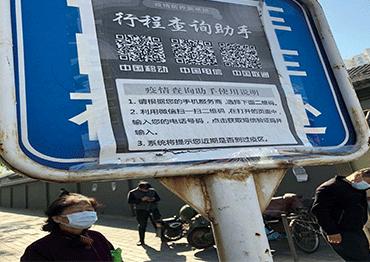The cities leading the way in adopting health codes, including Shenzhen, where Alibaba tech rival Tencent is based, Hangzhou and Shanghai are pushing ahead with internal database integration to further the opening and sharing of data.
“Only shared data can generate greater value,” Qi Tongjun, director of the data resources department of Hangzhou Data Resources Administration, told NewsChina in late April. Qi said for example, sharing data from the Social Security Bureau with other city bureaus would better serve the public.
Hangzhou was able to capitalize on the health code system to integrate administrative data. Experts interviewed by NewsChina said the launch of the health code system was tantamount to forcing governments to speed up data integration.
The health code system has become the standard method to track and prevent outbreaks of Covid-19, but the approach is not uniform. There are almost 100 health codes promoted by cities and provincial regions. In East China’s Jiangsu Province, major cities like Suzhou, Wuxi and Nanjing have their own apps, as well as one for the whole province. There is confusion about which app to use, as many overlap. In Hubei Province, where the pandemic started, you may need five or six different apps.
Zheng Lei, a professor at Fudan University’s School of International Relations and Public Affairs, told the reporter that administrations around the country at different levels - provincial, municipal and county - have their own concerns about nationwide health code interoperability, as each local government is cautious when it comes to health code evaluations done by other provinces. Integrating systems involves trust, and each government body has a conservative attitude toward ensuring virus prevention and progressing mutual recognition of the health code generated by other provinces.
Yang Wenzhuang, director of the Population and Family Department of the National Health Commission, told NewsChina there are three main reasons why health codes cannot be mutually recognized by different places. First, there are different standards for risk levels, response levels and prevention and control requirements in provincial regions. Also there are different standards for the generation of health codes, while health codes can only show the condition of the user at that specific moment. The health status afterwards cannot be secured simply on this basis. As the main technology developers behind the health code software, Alibaba and Tencent both used ElasticSearch, an industry-wide database system which powers applications with complex search features and requirements.
But since different regions have different requirements as the Covid-19 situation varies, the health code varies too. A red code in one area might not be red in another. For example, in Shaanxi Province, people who had close contact with confirmed patients in the past 14 days are assigned a red code, but Heilongjiang Province assigns a red code to those who had close contact with confirmed cases, suspected cases or asymptomatic cases.
While most parts of China have lowered their risk levels and it should be easier to integrate all the different health code apps, the challenge lies in barriers among codes across different provinces.
Qi Tongjun said that technology and standards are a superficial barrier to app integration, but the real barrier is the lack of willingness and determination to cooperate among government departments.
As of early May, provinces with large numbers of outgoing workers such as Guangdong, Zhejiang, Sichuan and Hunan have signed agreements on mutual recognition of health code certificates so work can resume.
At the national level, data sharing is also enhanced. According to the established “national integrated government service platform epidemic prevention and health information code interface standard,” each department in each province can check the national database of confirmed diagnoses, suspected cases and close contacts, as well as the county-level risk grade database.
On March 20, Mao Qun’an, director of the planning department of the National Health Commission, said at a State Council press conference that health codes in most parts of the country are mutually recognized, but there is a long way to go before there is a unified nationwide system.

 Old Version
Old Version

